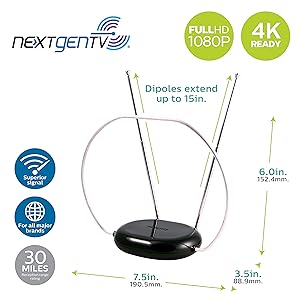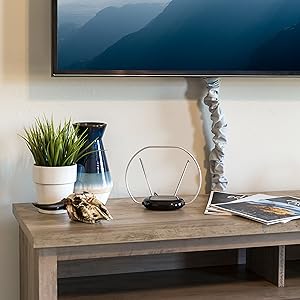معلومات عنا
حقوق الطبع والنشر © 2024 Desertcart Holdings Limited
Desert Online General Trading LLC
Dubai, United Arab Emirates












📡 Elevate your binge-watching game with free, crystal-clear HD — no strings attached!
The Philips Rabbit Ears Indoor TV Antenna delivers superior VHF and UHF reception with 4K and 1080p HD support, featuring a weighted base for stability and universal compatibility with all HDTVs. It offers free access to local channels, supports the latest ATSC 3.0 broadcast standard, and includes a 5ft coaxial cable for easy setup, all backed by a limited lifetime warranty.




| Brand Name | Philips |
| Item Weight | 7.1 ounces |
| Product Dimensions | 1.25 x 7.5 x 8.5 inches |
| Item model number | SDV8201B/27 |
| Is Discontinued By Manufacturer | No |
| Color Name | Trditional Loop Antenna |
| Special Features | Broadcast, Dipole, Full HD, Low Profile, Passive, default_no_selection_value |
| Impedance | 75 Ohm |
ترست بايلوت
منذ 3 أيام
منذ يومين